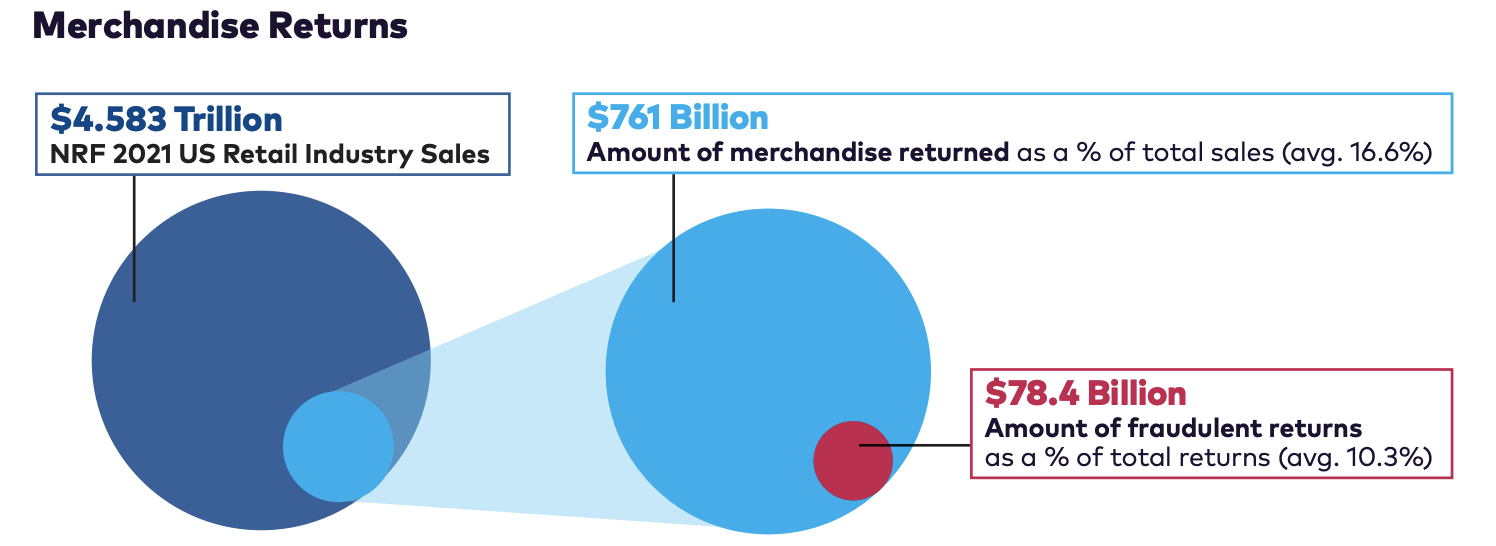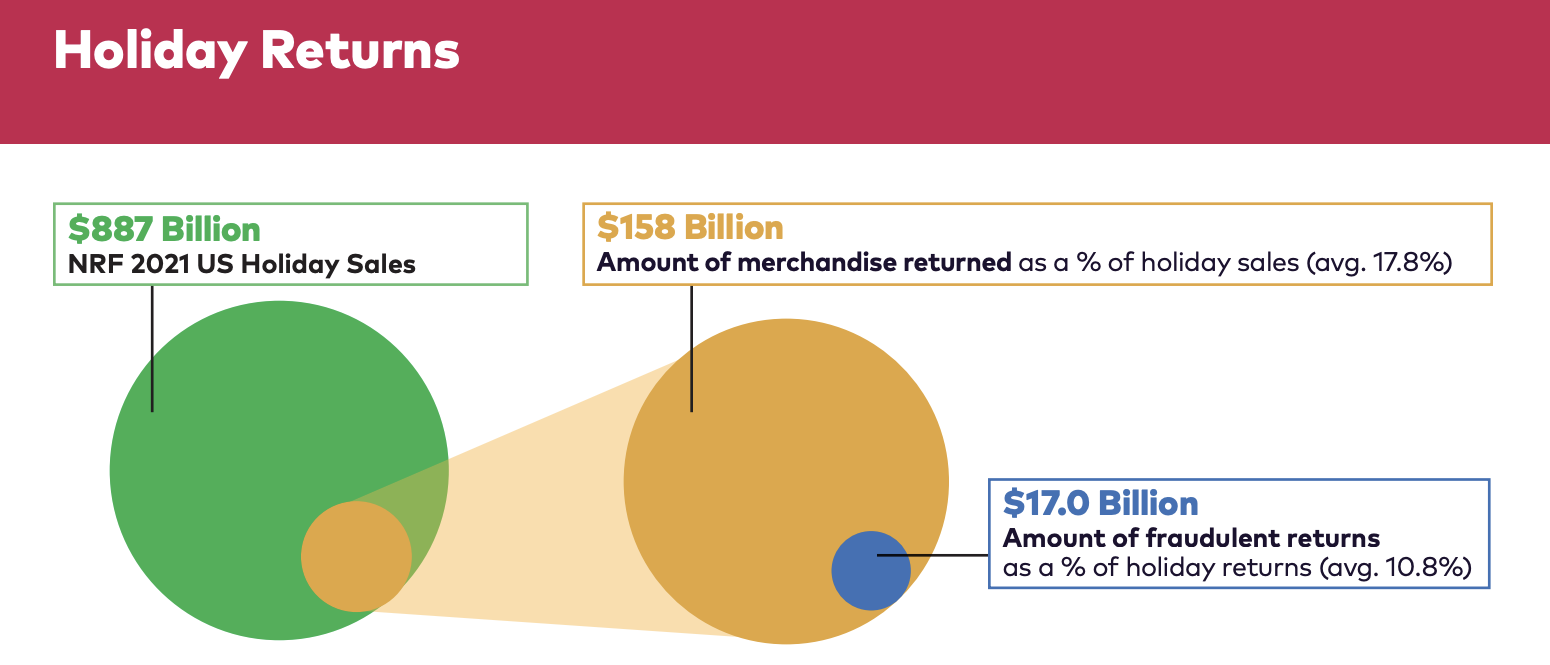Buy Now, Return in January? How the 2022 Amazon Holiday Return Policy Impacts Sellers

With Christmas right around the corner, merchants are already holding their major holiday sales. But on top of traffic and sales spikes comes a deluge of product returns taking a huge bite out of eCommerce profits (including rising logistics costs!). And with the extended Holiday returns window that favors buyers, Amazon sellers expect to see even more items sent back.
When the number of returns is insignificant, they are viewed as a cost of doing business, but with multiple lost sales, the consequences can be devastating. Unfortunately, sellers can’t entirely eliminate return requests, but they can take action to diminish their number, stop revenue leakage, and protect their brand reputation.
Here’s what we know about the 2022 Amazon return policy, how it impacts sellers, and what merchants can do to mitigate their holiday returns headaches.
The Extended Holiday Returns Window
For the 2022 holiday shopping season, most items purchased between October 11 and December 25, 2022, can be returned through January 31, 2023. That’s a whole month into the new year, stretching the standard return period from 30 days to almost three months for some orders! While the returns window for most orders is extended, the returns eligibility for all orders remains the same.
FBA vs. FBM Returns: A Quick Overview
Even though Amazon’s Holiday Returns Policy applies to FBA and FBM items, there are some differences in how FBA and third-party sellers handle returns.
1. FBA Returns. For the order fulfilled by Amazon, coordinating the return and refund with the customer is part of the FBA service. Thus, Amazon takes the money for the product refund from the sellers’ accounts, charges sellers the FBA returns fee and evaluates the condition of the returned product. Amazon puts the item back into your FBA inventory if it is deemed sellable. For unsellable items, Amazon investigates the cause of the damage and may reimburse the merchant if the product is determined to be damaged during shipping.
2. FBM Returns. For Amazon FBM products, sellers can have their own return policy in line with Amazon’s requirements and handle returns by themselves. In most cases, third-party sellers are responsible for return shipping costs. However, they can also charge buyers a restocking fee, commonly varying between 20-50% of the original price, and thus recoup some of their shipping expenses. FBM sellers should send the refund to the customer within two business days of receiving the return. Otherwise, Amazon will refund the customer automatically, withdrawing the amount from their sellers’ accounts.
How Amazon Returns Impact Merchants
In 2021, the percentage of returned merchandise amounted to 16.6% of total U.S. Retail Industry Sales, which was $761 billion. That amount surpasses the U.S. spent on national defense in 2021, which was $741 billion.
At the same time, holiday returns accounted for $158 billion, which was 17.8% of total U.S. Holiday Sales in 2021.
Although Amazon doesn’t disclose its overall returns numbers, its lenient return policy will likely lead to another flood of holiday product returns this year as well. So, why can holiday returns be such a pain in the neck?
At their crux, returns requests are just a part of doing business, but a LOT of them received during this extended return window can hit your Amazon business where it hurts. Soaring holiday sales combined with continued supply chain issues, inflation-related increases in logistics costs, and the upcoming Amazon’s fee changes significantly complicate online returns for retailers. The most common sensitive areas are inventory, profits, and brand loyalty.
Stock Management Issues
Maintaining healthy inventory levels in Q1 can be challenging for several reasons. On top of the expected Chinese New Year shipping delays and another FBA fee increase comes a surge of holiday returns. With almost 90 days to decide to keep an item or return it, gift recipients may take some extra time to try products out. As a result, some returned items can arrive back to you in an unsellable condition, and you’ll have to request Amazon to dispose of them.
At the same time, sellers need to deal with the sellable returned items, which makes dialing up the right balance between sold and on-hand inventory more intimidating. Amazon lets you remove the excess inventory from their fulfillment centers by submitting a removal order.
Starting January 17, 2023, removal and disposal fees will increase by $0.45 per unit, depending on size tier. So, ensure removal or disposal of Q4 excess by midnight January 16 to avoid increased fees.
Learn more about the upcoming Amazon Fee Changes in Jessica Wright’s deep dive:

Decreased Profitability
Along with issuing partial or full refunds for returned products, merchants have to deal with the cost of return processing (especially FBM sellers!), to say nothing of keeping tabs on sellable return inventory and updating it back into their stock list. Given the upcoming Amazon FBA storage fee increase in February, 2023, they will likely face another challenge — maintaining healthy net profit margins.
Pro Tip: Since Amazon continues hitting sellers with its FBA fee increases, we should brace ourselves for these upcoming changes. Luckily, we have a solution to help you maintain or even improve your profitability. Seller Labs Fee Calculator not only shows you existing seller fees but also the impact of upcoming changes on those fees. This is a no-cost way to make the right decision on an individual plan to update your pricing.
or
One more reason for sellers to worry about their profit margins is return fraud. Sometimes customers return products and mark them as “defective” or “not as described” even if the items in question have been sent as requested. There also have been reports of fake products being returned to Amazon FBA and later relisted. When Amazon catches up, an investigation may ensue, but refunds would still be issued at the seller’s expense.
Reputational Damage
Suppose the customer had a poor experience with the product. In that case, this may also elicit a poor review and rating and impact future customers who may buy from other sellers with better overall product ratings.
Along with the drop in customer loyalty, Amazon sellers risk losing Buy Box availability for products due to the high order defect rate (ODR). The ODR consists of three key components: negative feedback rate, A-to-Z guarantee claim rate, and credit card chargeback rate.
Sellers are required to maintain an ODR under 1% to sell in the Amazon Store. If a seller’s ODR exceeds 1%, Amazon may restrict selling privileges. Eventually, this may result in account suspension or even deactivation.
5 Last-Minute Strategies to Handle Holiday Returns with Grace
While you can’t control Amazon’s returns policy, you can take care of your business. In the case of holiday returns, that means inventory balancing, checking your Amazon Account Health daily, responding quickly and helpfully to every customer-service issue, and understanding that you won’t have a truly full sense of your holiday sales performance until February begins.
1. Investigate the Cause of the Return
The solution starts with the customer and operational data analysis to better understand the reason for the return request. Additionally, you can look at your buyer feedback. If you have a problem with your product description or packaging, your customers will tell you, which is actually a great holiday gift because now you can address the issue and limit the number of product returns in the future.
2. Keep Track of Return Requests
Keep track of every return claim so that you don’t miss your deadline for resolving the issue.
Important note: A return request can lead to a chargeback claim if not addressed on time. Given the costly bank fees, merchandise loss and related costs you’ll spend on disputing the transaction reversal, issuing a refund is a better option.
Maintaining a database with unfulfillable inventory, relisted FBA items, and removal orders is also a good practice which helps you regain control of your orders. You may also want to increase warehousing space to speed up returns processing.
3. Provide Outstanding Customer Service
Do you know that 96% of U.S. consumers believe retailer’s return policies directly reflect how much a brand cares about its shoppers? One bad return experience can result in complete consumer abandonment. This is why providing superb customer support is one of the key things to which you should pay attention. Be ready to help at any time and answer any question quickly. Also, remember that sometimes taking the loss on one purchase can help you retain a buyer.
4. Be Smart with Refunds
- Inspect every item before issuing a refund. If you believe a return to be fraudulent, don’t just brush aside your misgivings. Although there is no official seller protection policy, you can report abusive feedback or suspicious returns to an Amazon returns specialist to escalate your concerns over fraud.
- Giving refunds with Amazon gift cards is an excellent option, but only if a customer doesn’t mind.
- We recommend you wait until you receive the item back from the buyer before you issue a refund.
- If the buyer returns the item to you in a condition different from the state in which you sent it, you can issue a partial refund. Please don’t forget to explain this to the buyer in advance to avoid misunderstanding or a possible A-to-Z Guarantee claim.
5. Learn Your Lessons
Avoid stepping on the same rake twice and eliminate the returns caused by merchant error.
Optimize Your Listings
When customers receive a product that doesn’t meet their expectations, they’ll likely send it back. Making your product descriptions clear and straightforward will help you avoid misunderstandings about how the item should look. At the same time, you can use A+ Content for great-looking Amazon product detail pages that also tell your brand’s story. Also, show it as well as tell it. Make sure that the quality of your pictures is high and that the photos capture the real essence and features of the product.
Want a Top-Notch Amazon Listing?
Seller Labs Services will create a compelling product description for you.
Ensure Seamless Customer Shipping Experience
FBM sellers should carefully plan their distribution network. When it comes to product deliveries, it is crucial to be clear with the fulfillment times. Your customers should be aware of specific time frames and the shipping methods you offer, among other options. These critical pieces of information may be the key to reducing the number of potential returns.
Bottomline: What Sellers Think about the Updated Holiday Return Policy
In the face of inflation-related shifts in consumer spending behavior, Amazon has pushed hard to incentivize customers to start shopping early this holiday season. Baiting them with the extended holiday return window was one more additional perk. To some extent, this allowed buyers to stretch their budgets and gave them confidence in case they changed their decision about the purchased item.
However, the prolonged return period sparked a lot of questions among Amazon sellers. For example, some merchants are puzzled about shifting the last day the purchased item is eligible for a holiday return from December 31 to December 25. But the most common sellers’ concerns are reverse logistics challenges and the potential spike in fraudulent returns.
Given that holiday gifts are returned at a higher rate than regular purchases — up to a 35% return rate for eCommerce shops, some sellers are sure the returns in January will hurt. So, the best option will be to view the results with a cold head and the right strategies to mitigate the consequences of product returns. Just wait until the dust settles and let us know what you think!

Maria is an SEO Content Specialist at Seller Labs. Once captured by digital and content marketing in her student days, she keeps living and breathing it ever since.











